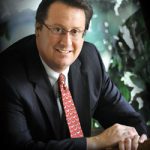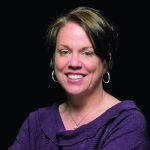What are your duties with Harvest Energy Services?
As a construction project manager, I’m responsible for managing the construction group of Harvest Energy Services and overseeing the construction projects we are supporting. That includes supporting clients with their projects, from providing preconstruction and contracting advice, coordinating preconstruction site walks, and conducting competitive procurements all the way to managing site-based teams of specialists and Harvest Energy site managers on a wind-construction project.
We’ll be on a project site and work with the BOP (Balance of Plant) contractor, the turbine supplier, and any other owner-contractors, coordinating between them and making sure that any issues are quickly resolved. We represent the owner on the construction site. In addition to that, we’ll provide oversight on the construction budget. We’ll make sure things are staying within budget and will keep an eye on the schedule and track it against the baseline schedule. That way we can alert the owner quickly to any potential delays and be able to get ahead of it before it becomes an issue. We also strive to identify any quality issues that might come up and work with the contractors on site to get those resolved — again, before they become a big issue. We also provide BOP management services for operational wind plants and perform maintenance services.
How did you get involved in the wind industry?
Initially, after I graduated college I went to work in the petrochemical industry outside Houston. I was working in a plastics plant there, and I started to hear about the renewable energy industry around that time, and I was pretty interested in it, in the fact that it was a clean-energy industry, and I was interested in being able to make a positive impact on the environment. Also, I had grown up in Houston and wanted to branch out a bit and go somewhere different. So, I started looking around and discovered that Colorado had quite a few renewable energy jobs. I came across one at a small company, a small wind-energy company — small both in terms of the number of people and also it was a manufacturer/installer of 50-kW turbines. I ended up taking a job there and just absolutely loved it. Ultimately, the company didn’t make it through the recession, but I met a lot of really great people there and discovered that I really liked the wind-energy industry. I also really liked the entrepreneurial spirit of a small company and the impact I was able to make there. I’ve been very lucky that I have been able to stick in the wind-energy industry ever since. I’ve made a lot of great contacts, and the people I work with here are really great.
What steps are involved in getting a project started?
Generally, we’ll start working with a client in the preconstruction phase. A wind-energy project can have a preconstruction/development phase of upwards of five years or more. While the developer is working on getting land leases and collecting wind data, they’ll bring the construction folks in to look at where to site turbines and infrastructure and start talking about construction costs. We’ll do initial cost estimates. We’ll work with BOP contractors to obtain bids, run competitive procurement processes, and evaluate different turbine technologies to put on the projects to get the best cost of energy.
Once it looks like a project is going to move forward and go into construction, we’re heavily involved in the contracting stage. We’ll help with getting the BOP contract squared away as well as selection and contracting for any other contractors. Sometimes we will work out transportation or procurement of transformers. And when the project is ready to move into construction, we’ll assemble a team to put on project site. That can vary depending on the project and the owner’s desires, but typically we’ll have a site manager out there, a civil specialist, an electrical specialist, and some folks to do mechanical completion walkdowns.
Throughout that construction phase of the project is where I’m most heavily involved, overseeing the contracts, making sure any issues get resolved, keeping a close eye on the schedule, identifying any opportunities for cost savings, making sure the project schedule doesn’t slip and critical milestones are met and that we stay within budget as well.
At the end of the project, we’ll be involved with handing the project over to the operational folks by involving them in the final commissioning and testing phases.
What wind projects is Harvest Energy working on now?
We currently are providing owner representation for construction management on two projects right now. One of them is outside Kimball, Nebraska; it’s a 30-MW project. The other one is in western Oklahoma, and it’s a 200-MW project. In addition to that, we are providing preconstruction consulting services on a number of projects across the central and western United States.
Harvest Energy stresses health, safety, and the environment. How does that play into wind projects?
Safety is always No. 1. And that’s important in construction, operation, maintenance — anything you’re doing out there. That’s one of our core values. That’s really something that is stressed on any construction site. We try to emphasize we want to stay on schedule; we want to stay on budget, but none of that is worth sacrificing safety. Having that message always coming from the management on the site is really important.
We want to encourage — no matter what their job title might be or what contractor they may be working for — if they see something unsafe we want them to feel comfortable to speak up about it. The environmental side is also something important to us and important to a lot of folks in the industry — we like to be associated with making a positive impact on the environment. On a construction site, that goes from simple stuff like making sure we pick up trash and keeping the disturbance areas to a minimum to adhering to environmental regulations. For instance, every construction site has a spill prevention, control, and counter-measures plan or SPCC. It’s really important that any spills are reported and cleaned up quickly. Construction sites also have a storm water pollution prevention plan to prevent sediment from being deposited into any waterways. Every construction project has studies done on it prior to construction for identifying any wetlands, areas of cultural importance, and identifying any endangered species or animals or plants out there. Making sure we pay attention to that, and keeping out of any sensitive areas and designing around those areas is important to protecting the environment.
What’s one of your proudest moments since you’ve been with Harvest Energy?
There are a lot of good things. We think one of the more unique things we’ve done here is at the end of last year, 2016, there were a lot of projects being qualified for the tax credit. We were involved in that. We qualified 13 projects in nine states. We did everything from procuring the storm water plans and filing the notices intent, to going out and finding a contractor who could do the work. We had nine different contractors, and had folks on each of the sites to oversee the work. All that was done in roughly two months.
By the time we were done and ready with the permitting and the contracting, construction started right after Thanksgiving, so it was very tight timing. It was during the winter, so there were some tough weather conditions. We successfully and safely qualified all of them. There was a good feeling as a team, definitely, that we were able to pull that off and deliver. For those projects, we have now excavated some foundations and installed sections of road. Qualifying these projects gives them the chance to be financially competitive and, ideally, reach operations.
Where do you see wind in 5 to 10 years?
In general, I think everything has a big question about what’s going to happen after 2020 when the tax credits expire, and there is quite a bit of uncertainty regarding the current tax reform plan. Personally, I think the expiration of the tax credit in 2020 may slow the installation of projects initially, but I think ultimately wind is competitive, and it’s a clean form of energy, and I don’t think that’s going to stop it. I think there’s a good likelihood that some of the states are going to step in and offer some incentives, and I think that may shape where most of the new project development will be. Then, I also see an increased focus on improving operational efficiencies of the existing projects. We’re already seeing some of that with the repowering of projects; I see that focus continuing, which would involve improving the technology and getting more out of what we have.
For more information, go to www.harvestenergyservices.com








































